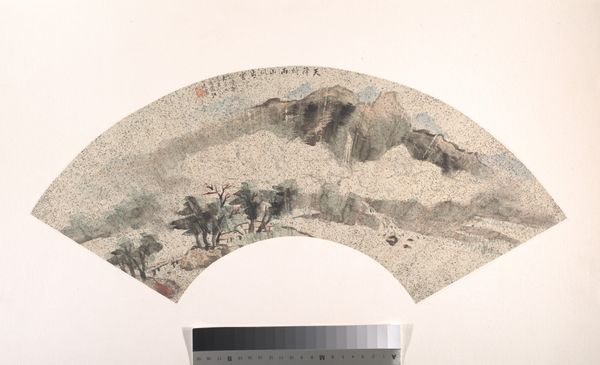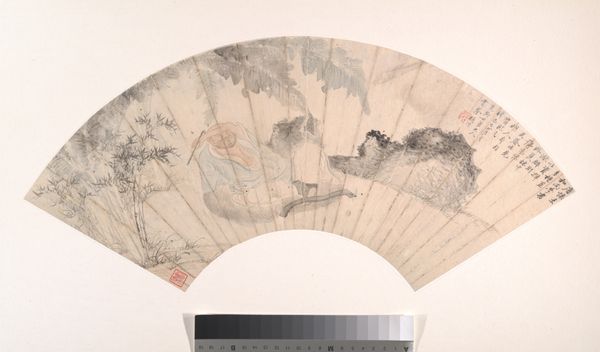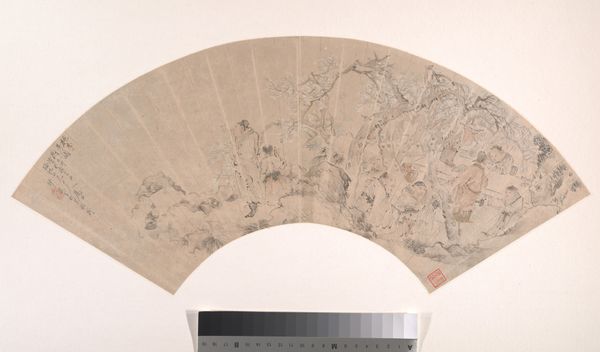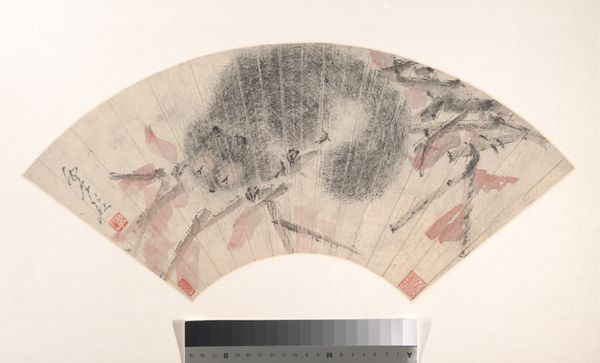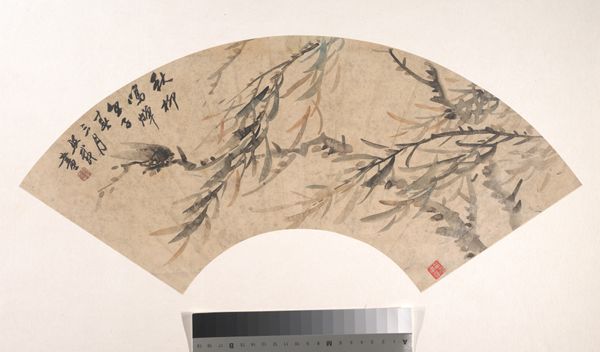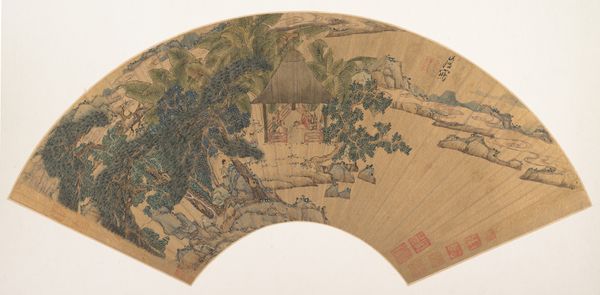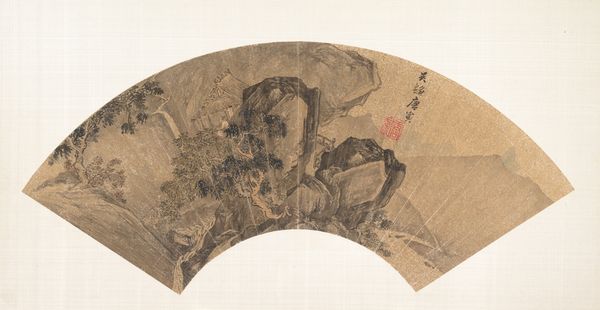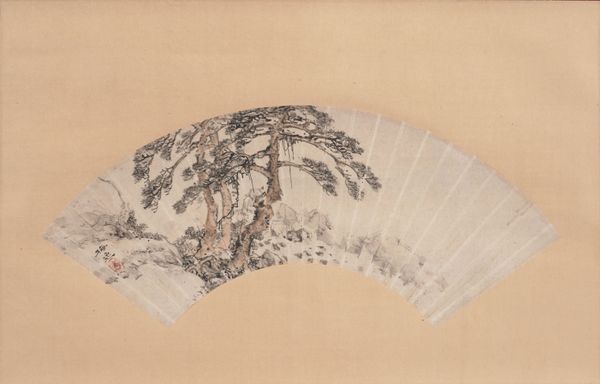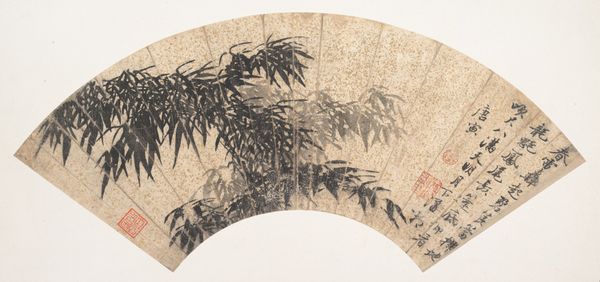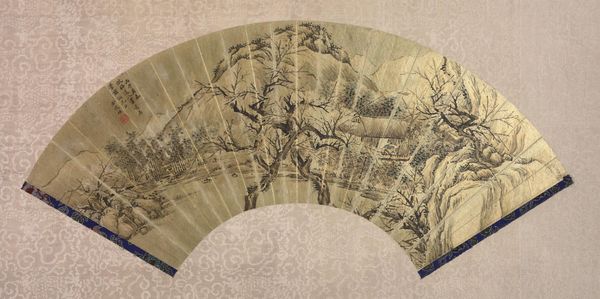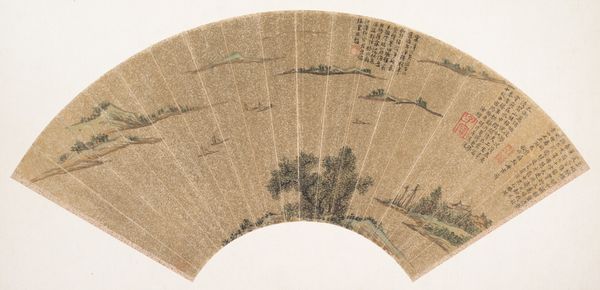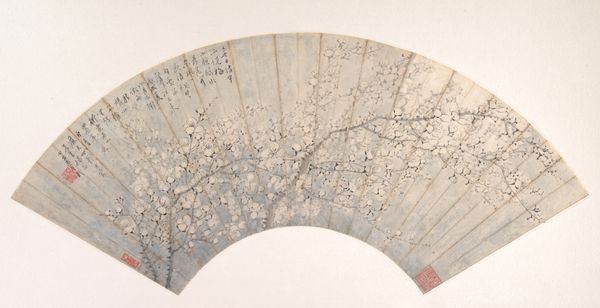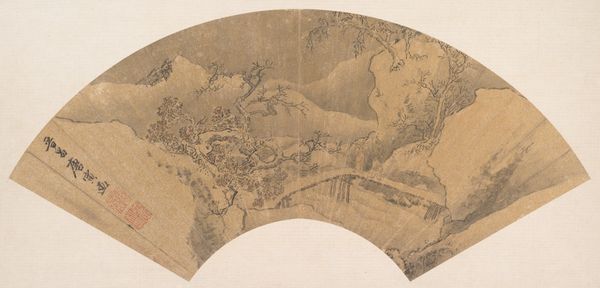
drawing, tempera, painting, paper, watercolor, ink
#
drawing
#
tempera
#
painting
#
sculpture
#
asian-art
#
landscape
#
paper
#
watercolor
#
ink
#
geometric
#
orientalism
Dimensions: 7 1/8 x 20 1/4 in. (18.1 x 51.4 cm)
Copyright: Public Domain
Editor: We’re looking at "Landscape," a painting by Hu Yuan, likely created sometime between 1823 and 1886. It's a blend of ink, watercolor, and tempera on paper, shaped like a fan. The landscape feels very serene, almost contemplative. What strikes you when you look at it? Curator: What immediately grabs my attention is how this piece speaks to the historical power dynamics inherent in landscape art. How does the artist, and by extension, the viewer, position themselves in relation to the natural world? Does the artist depict a harmony with nature, or something else? Editor: I hadn’t thought about power like that. I guess I saw it as a peaceful retreat *from* societal power. Curator: Precisely! And that's where it gets interesting. The desire for retreat, for an escape to nature, often reflects a dissatisfaction with the existing social and political order. Who *gets* to retreat? The literati. Who are denied this respite? The peasantry, whose labor allows for such leisure and production of art like this. Does the painting’s geometric elements somehow contribute to, or clash with this interpretation, do you think? Editor: Hmmm, that's thought-provoking. The mountains feel solid, unmoving, but there's that little boat and dwelling… Curator: Perhaps those structures signal not escape but an imposed domesticity onto an idealized nature. Or maybe this represents more literally the real estate the literati controlled, and therefore reinforce existing power structures? Considering orientalism adds another layer – who is consuming and interpreting this landscape, and what are their assumptions? Editor: So it’s not just a pretty picture, it's a commentary – maybe a subtle one – on the inequalities of the time? I never considered how a landscape could embody something like that! Curator: Exactly! By exploring these layers, we begin to unpack not only the aesthetic beauty but also the social and political undercurrents shaping our understanding of art and the world around us.
Comments
No comments
Be the first to comment and join the conversation on the ultimate creative platform.
